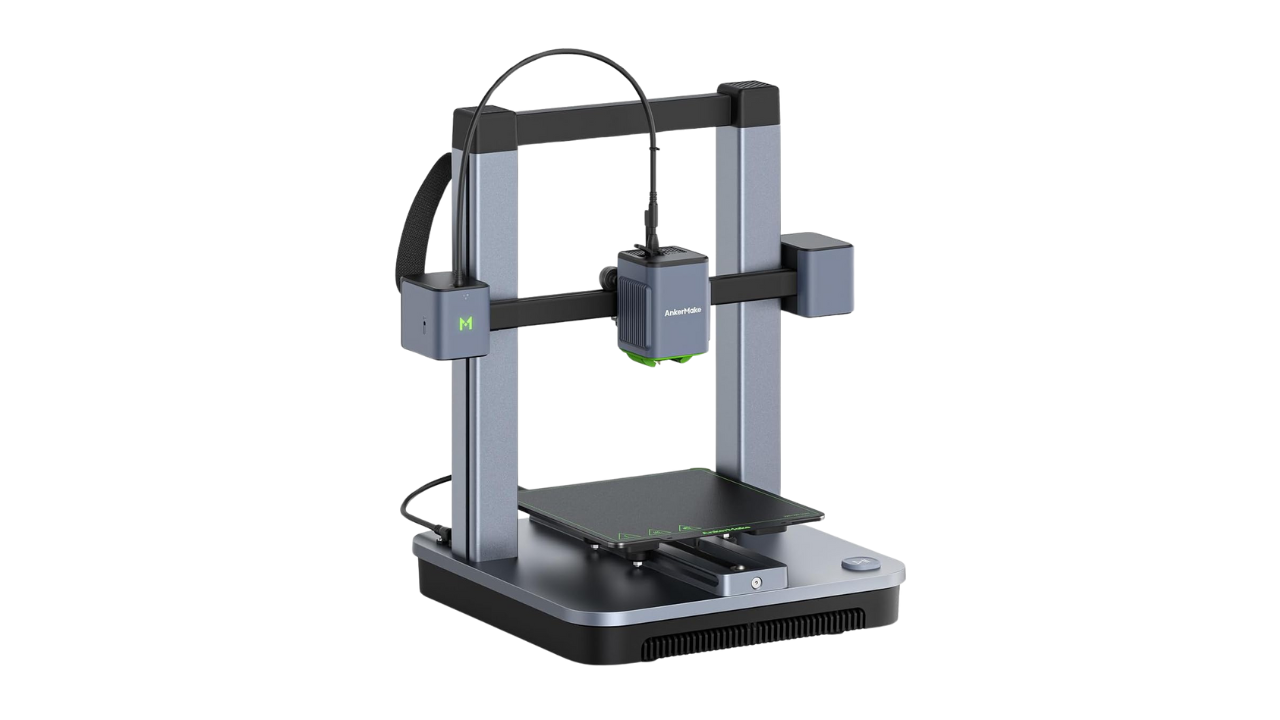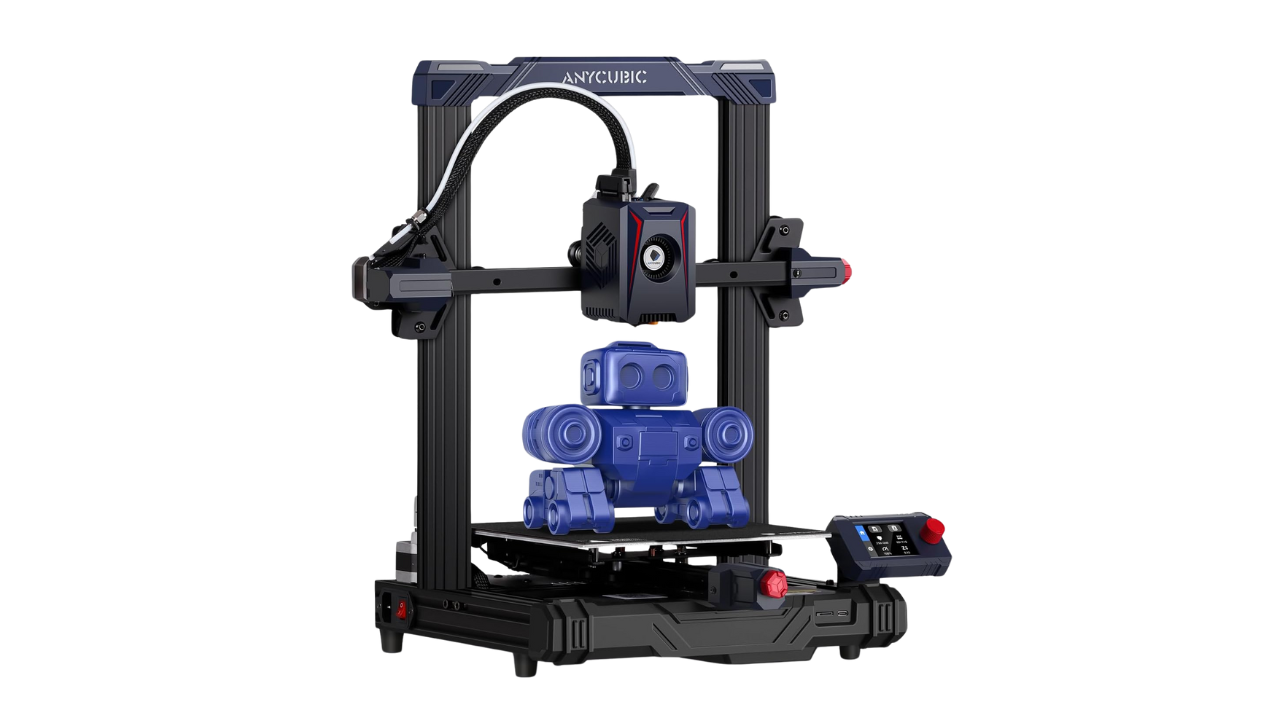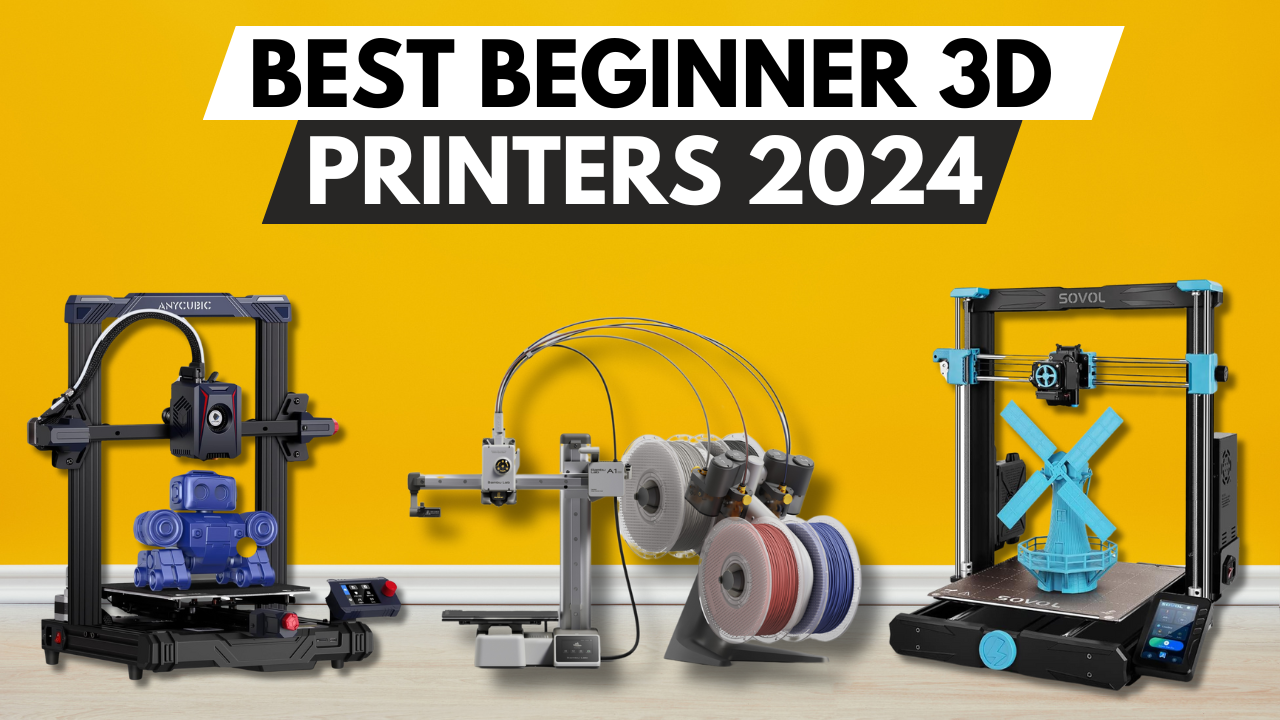Disclaimer: We may earn affiliate commission from qualifying purchases at no extra cost to you.
Embark on your 3D printing journey with ease using the Best Beginner 3D Printers of 2024. These user-friendly devices offer intuitive interfaces, reliable performance, and affordability, making them ideal for those new to the world of 3D printing. Dive into creativity and exploration with the top-rated beginner-friendly printers leading the way in 2024.

Elegoo Neptune 3 Pro

AnkerMake M5C

Creality Ender 3 V3 SE

Sovol SV06 Plus

ANYCUBIC Kobra 2 Neo

Bambu Lab A1 Mini Combo

The first one on our list is Elegoo Neptune 3 Pro. The Neptune 3 Pro is a standout 3D printer for beginners that combines user-friendly features with impressive performance. Boasting a build volume of 225 x 225 x 280 mm, this printer offers versatility for various projects. One of its key highlights is the direct drive and dual Z-axis, enhancing stability and print quality.
One of the notable aspects is its ease of assembly, requiring only minimal effort with 90% pre-assembly. Setting up the printer is a breeze, taking just 30 minutes from unboxing to the first print. The inclusion of a direct drive proves advantageous, especially when working with slippery filaments like TPU, providing a solid grip for smooth printing. The dual-gear extruder ensures smooth filament feeding, contributing to the overall quiet operation of the machine.
A notable improvement in the Pro edition is the addition of a task light, a seemingly small yet practical enhancement for better visibility during printing. The PEI-coated build plate provides an ideal amount of adhesion and easy release when cold.
The printer comes with a comprehensive set of tools for assembly and maintenance, including side cutters, a plastic scraper, spare nozzles, and a microSD card with a USB adapter. The inclusion of a short video on assembling the printer adds to the user-friendly experience.
In terms of performance, the Neptune 3 Pro shines. It handles various materials including TPU, PETG, and PLA with finesse, delivering clean and detailed prints. Bed leveling is simplified with the auto bed leveling system, tapping 36 points across the bed for precise calibration.
Overall, the Elegoo Neptune 3 Pro stands out as an excellent choice for beginners. With its impressive features and ease of use, it offers a compelling option in the 3D printer market.

Next up, we have the AnkerMake M5C. The M5C 3D printer stands out as a compelling choice for both beginners and experienced hobbyists, offering a balance of speed, print quality, and a spacious print bed. Weighing about 24 pounds, the printer boasts a 9.25-by-9.2-inch heated print bed, accommodating various filaments like PLA, PLA+, PETG, ABS, TPU, carbon fiber, and wood. The removable plate made of flexible PEI thermoplastic facilitates easy print removal.
Assembling the M5C is straightforward, taking less than 15 minutes. The gantry-style design incorporates enclosed drive screws for Z-axis movement, with the Y-axis controlled by the print bed’s forward and backward motion, and the X-axis by the extruder’s left-to-right movement. Despite lacking a real-time video monitor or time-lapse capability, the M5C compensates with an easy-to-use slicer software, available in both Easy and Expert modes.
The printer comes with a toolkit, including Allen wrenches and a side cutter for filament clipping. It also includes a replacement nozzle and provides options to use AnkerMake’s slicer software, Ultimaker Cura, or PrusaSlicer.
The M5C prints from three sources: the AnkerMake app, a USB drive with pre-sliced files, or the slicer software on a PC or Mac. The default print speed is 250 mm/s, with the option to double it to 500 mm/s for faster prints. Despite some stringing observed at higher speeds, the print quality especially with PLA+ filament is impressive. The printer excels in producing high-quality output for various models, although the documentation could be more detailed for beginners.
In conclusion, the AnkerMake M5C is a commendable midrange 3D printer, offering great value with its easy assembly, user-friendly slicer software, and high-quality prints across a range of filaments.

The next one on our list is Creality Ender-3 V3 SE. The Ender-3 V3 SE is a game-changer in the world of 3D printing. This user-friendly 3D printer is designed to cater to all skill levels, making it an ideal choice for both beginners and experienced users. Its standout feature is the ease of use, with thoughtful additions like hassle-free bed leveling, automatic filament loading and unloading, and an intuitive dynamic UI display. These features make the entire 3D printing process effortless and accessible to everyone.
Structural optimizations have made the Ender-3 V3 SE a compact, lightweight, and visually appealing 3D printer. The inclusion of a dual Z-axis design ensures structural stability, reducing wobbling and enhancing the quality of your prints. The printer’s impressive maximum printing speed of 250mm/s and acceleration of 2500mm/s² set new standards for speed, allowing you to complete your projects in significantly less time.
What truly sets the Ender-3 V3 SE apart is its accessibility. It’s seamlessly integrated with Creality’s proprietary slicer, Creality Print, ensuring a user-friendly and efficient experience. Even beginners can confidently work with various materials, including TPU, ABS, and PLA, thanks to the “Sprite” extruder.
Printing results are impressive, with high speeds of up to 250 mm/s for PLA, although Creality recommends 180 mm/s for a balance between speed and quality. The quality remains acceptable even at this rapid pace, and for improved results, the print speed can be adjusted.
In summary, the Creality Ender-3 V3 SE is not just a 3D printer; it’s a tool that simplifies creativity. With its user-friendly features, structural stability, and impressive speed, it’s a valuable addition to any creative workspace, making 3D printing accessible and enjoyable for all.

The Sovol SV06 Plus is on our list as well. This upgraded version of its predecessor, the SV06, promises an enhanced 3D printing experience with several key improvements. The original SV06 was already known for being a budget-friendly 3D printer, and the SV06 Plus seems to build on that foundation.
One notable improvement is the increased build volume, now offering an expanded 300x300x340mm space. This upgrade provides users with more room for creativity and larger prints. The inclusion of a direct drive extruder remains a strong feature, ensuring reliable and precise filament feeding.
The SV06 Plus continues to embrace the open-source spirit, following the RepRap movement, and maintains compatibility with various filaments, including PLA, PETG, TPU, and ABS with a hot end capable of reaching temperatures up to 300 degrees Celsius.
Auto bed leveling, a feature appreciated in the original SV06, is retained, simplifying the calibration process and contributing to consistent print quality. The linear rods on both the X and Y axes provide stability and accuracy during printing, and Sovol’s decision to stick with a planetary drive extruder and an all-metal hot-end suggests a commitment to quality.
In terms of print quality, the SV06 Plus impresses with smooth and detailed prints. While the SV06 Plus inherits the somewhat dated UI from its predecessor, the focus appears to be on functionality rather than aesthetics. The machine’s assembly process is well-documented with a helpful video guide, and the leveling procedure remains user-friendly.
In terms of pricing, the SV06 Plus maintains affordability, making it an attractive option for entry-level users or those on a budget. With its larger build volume, reliable features, and competitive pricing, the Sovol SV06 Plus seems poised to continue the legacy of its predecessor as a dependable and cost-effective 3D printer in the market.

The next one on our list is Anycubic Kobra 2 Neo. The Kobra 2 Neo presents a compelling option for 3D printing enthusiasts, combining affordability with impressive features. This direct drive 3D printer boasts a user-friendly experience, making it an excellent choice for both beginners and seasoned makers.
Measuring 445 x 443 x 490 mm, the Kobra 2 Neo has a substantial build volume of 220 x 220 x 250 mm, accommodating various project sizes. The direct drive extruder featuring a 0.4mm interchangeable nozzle contributes to the printer’s reliability and ease of use. The inclusion of a double-sided PEI spring steel build platform heated for optimal adhesion ensures a smooth printing process.
One standout feature is the inductive auto bed leveling system, simplifying the calibration process and enhancing print accuracy. The 2.4-inch color LCD with a knob interface replaces the touch screen found in its predecessor, providing a responsive and intuitive control experience.
The Kobra 2 Neo’s assembly is a breeze, arriving 90% pre-assembled and requiring minimal effort to set up. The inclusion of an inductive automatic bed leveling sensor streamlines the leveling process, though adjusting the Z height may pose a slight challenge for beginners.
Anycubic includes essential tools and accessories in the package, ensuring users have everything needed to start printing. The printer supports various materials, including PLA, PETG, TPU, and ABS, offering versatility for different applications.
Printing performance is commendable, delivering quality prints with minimal fuss. The direct drive system simplifies filament loading, making it especially friendly for those new to 3D printing.
While the Kobra 2 Neo may lack some advanced features found in higher-end models, its affordability, ease of use, and reliable performance make it a top choice, particularly for beginners entering the world of 3D printing.

The last one on our list is Bambu Lab A1 Mini Combo. The A1 Mini offers a compact and innovative 3D printing experience with its unique features. The printer arrives securely packaged in a cube cardboard box with foam protection, ensuring safe delivery. Unboxing is a breeze, taking about 15 minutes, and setup is completed in under 30 minutes.
The A1 Mini’s cantilever design and compact format make it space-efficient, and the inclusion of the AMS Lite adds versatility. The AMS Lite spool holders, print surface, filament swatches, and accessories are neatly organized in layers within the packaging. A thoughtful addition is the Filament Swatches box, which provides samples for easy filament selection.
The printer boasts a 180x180x180 mm³ build volume, suitable for most 3D printing needs. The direct drive extruder, equipped with a smart filament sensor, allows for efficient filament changes. The automatic flow dynamics calibration simplifies the calibration process, enhancing print quality.
A standout feature is the all-metal hot end with a smart design, decoupling the heater and thermistor from the nozzle. This design, coupled with a unique extruder setup, allows for easy maintenance and nozzle changes.
The cantilever design incorporates linear rails for stability, and the magnetic heatbed with PEI textured plate ensures reliable adhesion. The printer’s noise levels are impressively low, thanks to the Active Motor Noise Canceling feature.
Connectivity is enhanced with Wi-Fi capabilities, allowing control through the Bambu Handy app and Bambu Studio. The 2.7-inch color touchscreen offers a convenient interface, although users with larger fingers may find its size challenging.
Overall, the Bambu Lab A1 Mini Combo truly shines with its sleek design, inventive features, and quiet operation. It’s the perfect selection for newcomers in search of an affordable, compact machine that effortlessly delivers right out of the box.
In 2024, the market for beginner 3D printers offers a range of options tailored to newcomers to the world of 3D printing. Among these, certain models stand out as the best choices for beginners, offering a combination of affordability, ease of use, and reliability. These top contenders feature user-friendly interfaces, straightforward setup processes, and comprehensive documentation to help novice users get started with 3D printing quickly and easily. Additionally, they boast sturdy construction and reliable performance, ensuring consistent print quality and minimal maintenance requirements. With accessible pricing and robust support communities, these top-rated beginner 3D printers empower users to explore the endless possibilities of 3D printing with confidence and enthusiasm in 2024.

